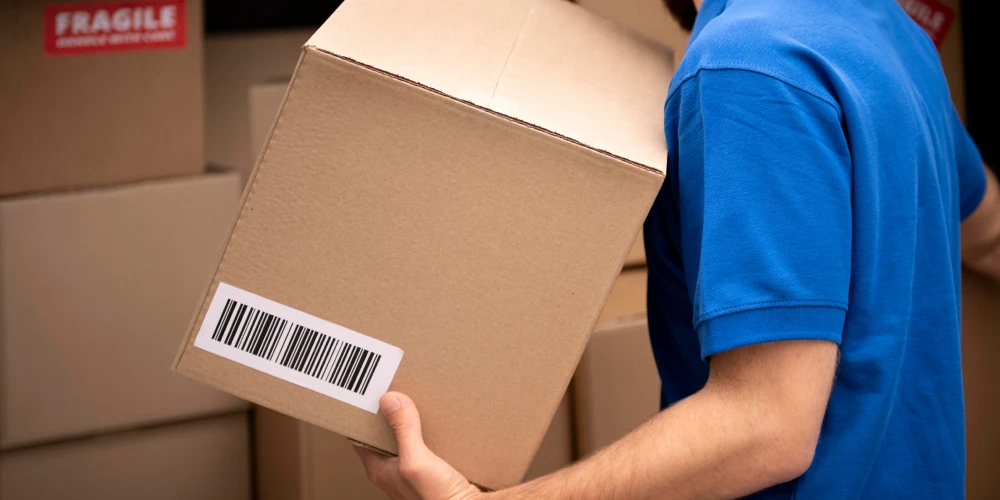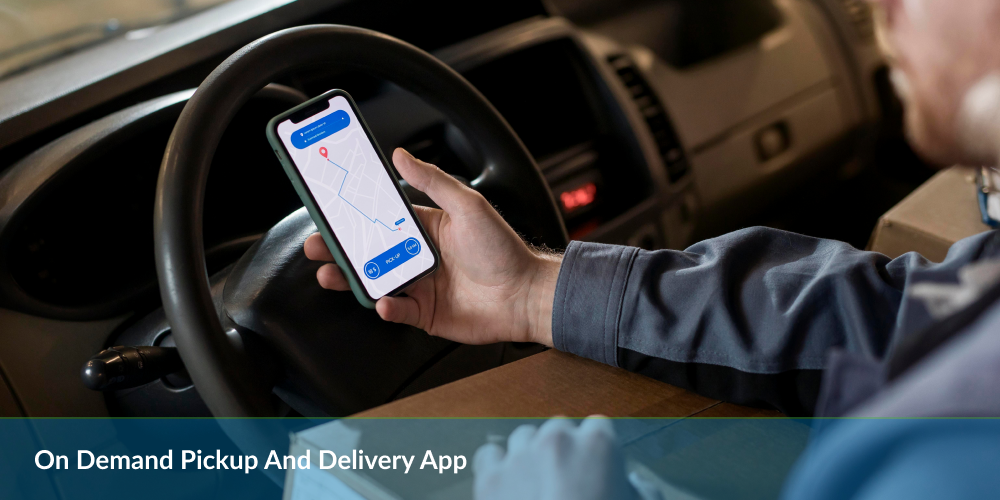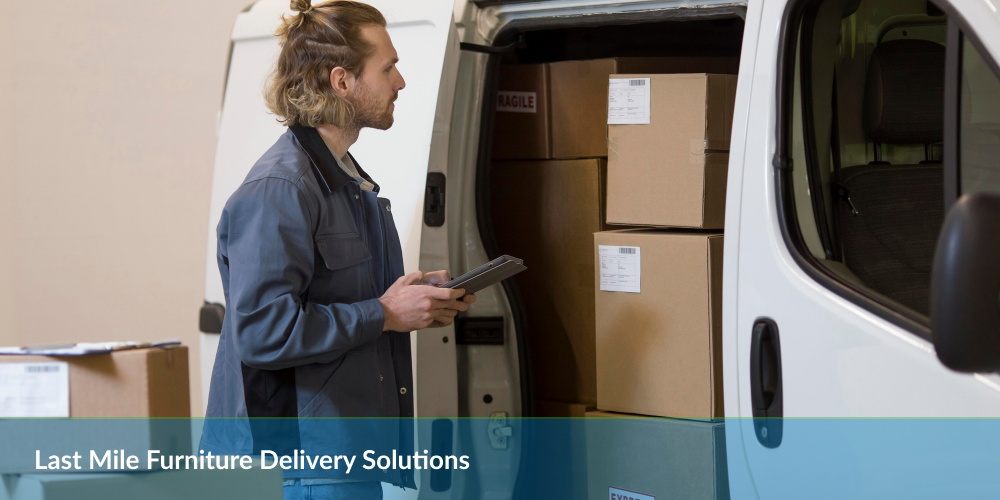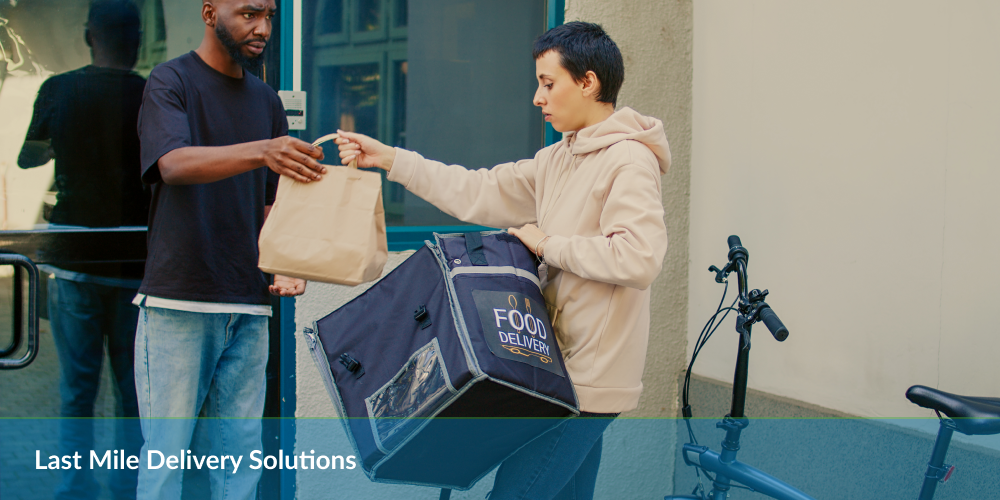Table of Contents
- The Multifold Benefits of Using Pod Trackers for BB Asset Management
- Essential Qualities of TopTier BB Pod Trackers
- Streamlining the Supply Chain and Logistics with Pod Tracker Integration
- Fleet Management Enhanced by the Adoption of Pod Trackers
- The Dynamic Impact of Pod Trackers on Inventory Control
- Leveraging Realtime Data Analytics and Reporting
- Enhancing Customer Satisfaction through Tracking Visibility
- Evaluating the ROI on Deploying Pod Trackers in a BB Environment
- Addressing Security and Privacy Concerns in Pod Tracking
- The Evolution of IoT and Its Role in Refining Pod Tracking Technology
- Anticipating the Future Trends and Innovations in BB Pod Tracking Solutions
- Key Takeaways
- Wrapping It Up
Pod trackers are innovative tools designed for real-time tracking and management of shipping containers or ‘pods.’ Advanced telemetry and communication technology provide businesses with precise location data, condition monitoring, and security notifications for their assets during transportation and storage.

Adopting cutting-edge tracking technologies has become non-negotiable in today’s fast-paced business environment. By delivering detailed insights into asset location and status, these systems enable companies to optimize logistics, enhance operational Efficiency, and elevate customer service standards.
Within the B2B ecosystem, pod trackers serve as a critical component by ensuring transparency and accountability between partner firms. These trackers support supply chain integrity, foster business partners’ trust, and build robust logistical frameworks that can significantly improve the bottom line.
The Multifold Benefits of Using Pod Trackers for B2B Asset Management
Pod trackers serve as a transformative tool within the B2B sector, offering a range of benefits for asset management. By integrating these devices into their operations, businesses experience a tangible uptick in efficacies across various fronts.
Increased Accuracy in Asset Location Tracking
Embedding pod trackers into B2B asset management results in pinpoint accuracy regarding asset locations. These devices utilize advanced GPS technology, ensuring real-time tracking of goods in transit. The precision afforded by this technology mitigates the risks associated with asset misplacement and expedited recovery in the event of mishandling or theft.
Enhanced Efficiency and Time Management
Utilizing pod trackers significantly boosts operational efficiency. Managers save hours previously spent on manual asset tracking, as pod trackers supply instantaneous data about asset locations and movements. The ability to quickly access this data cuts down on administrative tasks, thus reallocating precious time to other strategic business operations.
Reduced Losses and Improved Asset Security
Securing assets becomes easier with pod trackers. The technology not only aids in preventing asset loss by providing alerts and up-to-the-minute location data but also acts as a deterrent against theft. Through geo-fencing features, businesses are immediately notified if assets move beyond predetermined boundaries, enabling swift action to safeguard those assets.
Custom Solutions for Unique Business Needs
Every business has distinct needs and challenges, and pod trackers rise to the occasion through customizable solutions. Options for different tracking frequencies, battery lives, sizes, and ranges allow businesses to select a setup that aligns directly with their specific requirements, guaranteeing an optimized asset-tracking experience tailored to their operational framework.
Essential Qualities of Top-Tier B2B Pod Trackers
Business-to-business enterprises demand pod trackers that deliver unmatched performance and reliability. Here, precision in selection translates into efficiency in operations. Behind the scenes, these are the cornerstone features businesses should prioritize when investing in pod-tracking technology.
Real-time Tracking Capabilities
Pod trackers that offer real-time tracking meet the demand for up-to-the-minute location data. The ability to pinpoint assets leads to enhanced operational control and proactive management of any potential supply chain disruptions.
Integration with Existing Systems and Websites
Streamlined business processes are achieved when pod trackers seamlessly integrate with the current digital infrastructure. This ability simplifies data consolidation and facilitates user-friendly experiences for logistics teams.
Scalability and Customization Options
As businesses grow, their tracking systems must adapt. Scalable pod trackers ensure they are a one-time investment that adjusts to an organization’s evolving needs. At the same time, customization options allow the technology to cater specifically to the unique facets of the business.
Durability and Longevity for Various Shipping Conditions
Robust pod trackers survive the rigors of diverse shipping environments. This resilience ensures consistent performance, whether in transit by air, sea or over land, safeguarding against data gaps in asset tracking.
Streamlining the Supply Chain and Logistics with Pod Tracker Integration
Pod trackers redefine the efficiency of supply chain management and logistics for businesses. Integrating these compact tracking devices into company operations allows for an unprecedented level of precision and operational agility.
Automating the Supply Chain with Real-time Data
By harnessing the power of real-time data, pod trackers automate the supply chain, immediately updating managers on the status and location of their goods. This seamless data collection minimizes the need for manual tracking methods, reducing delays and human error, and paves the way for proactive management of potential disruptions.
Improving Logistical Operations with Enhanced Tracking
Enhanced tracking capabilities afforded by pod trackers deliver detailed insights into asset movement. Logistics operations benefit from the ability to make informed decisions based on the granular tracking data these devices provide. This information makes route optimization and resource allocation data-driven procedures that significantly lift logistical efficiency.
Delivering Packages More Efficiently
Businesses leveraging pod tracker technology report increased efficiency in package delivery. The device’s ability to monitor conditions in transit and provide updates ensures that packages are delivered within tighter timeframes. Customers receive orders quicker, and businesses benefit from the streamlined delivery process.
Integrating pod trackers into supply chain and logistics operations catalyzes robust growth and enhanced service delivery. Their use fosters a dynamic and responsive logistics network that can adapt to ever-changing market demands and customer expectations.
Fleet Management Enhanced by the Adoption of Pod Trackers
Pod trackers revolutionize fleet management by offering capabilities to manage fleet shipments in real-time. By adopting these devices, businesses gain unparalleled visibility into their fleet operations. Managers can track vehicle locations, monitor driver behavior, and receive alerts on unauthorized usage or deviations from planned routes.
Managing Fleet Shipments in Real-time
Pod trackers enable real-time shipment management. By accessing location data, managers can update customers on shipment statuses and rearrange delivery schedules as necessary, directly impacting customer satisfaction and operational efficiency.
Predictive Analytics for Fleet Maintenance and Route Optimization
Pod trackers cater to more than just real-time updates; they empower businesses with predictive analytics. This data analysis aids in anticipating maintenance needs, thus averting potential breakdowns and prolonging fleet lifespan. Additionally, analyzing vast amounts of data ensures optimal route selection, which decreases fuel consumption and increases delivery speed.
Impact on Delivery Timelines and Service Quality
The adoption of pod trackers affects delivery timelines and overall service quality. Streamlined route planning translates to faster deliveries, while constant monitoring ensures that service quality remains consistently high. This technology also addresses potential issues before they escalate, maintaining service reliability.
The Dynamic Impact of Pod Trackers on Inventory Control
With pod trackers in place, inventory control becomes more robust and responsive. These tracking devices offer insights into current inventory levels, allowing businesses to align their supply with demand efficiently. Pod trackers provide a live snapshot of resource availability, enabling precise decision-making and inventory optimization.
Real-time Inventory Levels to Balance Supply and Demand
Businesses harnessing pod trackers detect stock quantities instantaneously. Managers, therefore, adjust procurement schedules and production cycles adeptly to prevent overstocking and understocking scenarios. By receiving real-time data, firms adeptly calibrate their operations to market conditions.
Reducing Inventory Shrinkage through Better Tracking
Shrinkage, a perennial challenge in inventory management, diminishes with the advent of pod trackers. These small but powerful devices deter the loss of goods by maintaining continual visibility. Should an item go astray, the pod tracker sends alerts, initiating swift recovery actions and reducing potential inventory loss.
Integrating Pod Trackers with Inventory Management Systems
When inventory management systems incorporate pod trackers, a seamless data stream transpires between the physical stock and its digital record. This integration leads to enhanced accuracy in stock records, better order fulfillment, and simplified auditing processes. Companies utilizing this synchronized system benefit from reduced manual errors and a more coherent inventory management approach.
- Pod trackers furnish minute-by-minute stock data, allowing for detailed analysis of inventory trends.
- These devices, by transmitting location and status information, assist in pinpointing inefficiencies in the stock handling processes.
- Integration with inventory management software automates many processes, reducing the time required for manual inventory counts.
Leveraging Real-time Data Analytics and Reporting
The fusion of pod trackers with real-time data analytics and reporting transforms decision-making within B2B enterprises. Such tools offer up-to-the-minute visibility into asset locations and conditions. This accessibility to instantaneous data empowers businesses to make informed operational choices that positively affect the bottom line.
Custom Reporting for Specific Business Insights
Businesses tailor data points with custom reporting to align with unique operational objectives. These reports, designed around parameters specific to the company’s needs, reveal trends and inefficiencies, enabling precise adjustments to the supply chain and asset management strategies.
Data-Driven Decision-Making in B2B
Data-driven decision-making relies on empirical evidence. Instead of estimations or assumptions, B2B managers use accurate data from pod trackers to guide strategic choices. This reliance on concrete data reduces errors, sharpens operational efficiency, and paves the way for robust growth.
Enhancing Performance with Actionable Analytics
Actionable analytics derived from pod trackers supply a depth of insights for performance enhancement. Real-time tracking data highlights areas for improvement across different departments, fostering a culture of continuous development within organizations. The integration of such analytics supports proactive measures rather than reactive tactics, keeping B2B companies agile and competitive.
Enhancing Customer Satisfaction through Tracking Visibility
Customers expect transparency and timely information regarding their B2B shipments. By incorporating pod trackers, businesses grant customers access to real-time delivery updates. This level of service translates directly to enhanced customer satisfaction and sustained trust.
Transparent package tracking establishes accountability and reassures customers about the security and progress of their orders. B2B clients value the ability to monitor their cargo from origin to destination, as this data helps plan and streamline their operations.
Moreover, offering custom interfaces on B2B websites can significantly improve user experience. These interfaces allow customers to navigate tracking information tailored to their needs and preferences easily. Optimally designed portals underscore a business’s commitment to catering to its client’s needs, further solidifying the customer-business relationship.
- A robust tracking system assures customers of a company’s efficiency and reliability.
- Detailed shipment visibility enables B2B clients to manage resources effectively, adjusting their strategies based on the transport status of their goods.
- Custom interfaces elevate professional interaction, ensuring clients can conveniently access the required details without unnecessary complexity.
Evaluating the ROI on Deploying Pod Trackers in a B2B Environment
Deploying pod trackers brings measurable returns to businesses operating within B2B frameworks. Companies unearth a transparent illustration of expenditures versus savings by conducting a streamlined cost-benefit analysis. The initial costs, including purchase, implementation, and training, stand opposite long-term benefits such as reduced asset loss, optimized route planning, and diminished operational inefficiencies.
Cost-Benefit Analysis of Pod Tracker Implementations
Quantifying the value of pod trackers requires an in-depth cost-benefit analysis. Businesses assess the cost of these devices against the monetary returns from enhanced asset management. Factors included in this evaluation range from reduced lost shipments to the increased capacity for predictive maintenance. Select companies, after implementation, report reduced insurance premiums due to enhanced security and asset traceability.
Long-Term Savings and Value Added to B2B Services
Incorporating pod trackers adds significant value to B2B services. Clients gain access to thorough tracking information, enabling enhanced customer service experiences. On the savings front, companies often notice decreased theft-related losses and improved inventory turnover rates. Optimization of supply chains results in higher efficiency and a noteworthy reduction in waste.
Maximizing Pod Tracker Efficiency in B2B Operations
Deployment and maintenance of pod trackers within the B2B sector necessitate a strategic approach. Integrating pod trackers starts with comprehensive preparation to ensure business workflows remain uninterrupted. Planning for deployment lays a foundation for robust utilization of these devices, translating into tangible improvements in asset management and customer satisfaction.
Preparation and Planning for a Smooth Rollout
Before introducing pod trackers, analyze the existing logistical structure to identify potential areas for tracking implementation. This phase involves procuring equipment, setting clear objectives for usage, and determining the necessary support infrastructure. Draft plans must also encapsulate a realistic timeline that orients all stakeholders toward a unified goal. A smooth rollout is contingent on procuring devices from reliable manufacturers and considering any technical specifications unique to the business’s needs.
Regular Maintenance Schedules for Optimal Performance
Post-deployment, regular maintenance regimen is mandatory to sustain tracker performance and longevity. This involves firmware updates, checking battery life, verifying data transmission integrity, and troubleshooting anomalies. Organizations must instill a routine that fits within their operational cadence yet remains flexible enough to adapt to emergent technical demands. Scheduled assessments will preempt technical issues and assure uninterrupted service.
Training Staff and Customers on Using Trackers Effectively
Sufficient training for staff and customers develops proficiency in using pod trackers, enabling the technology to deliver its full value. Educating internal teams ensures that employees can extract, interpret, and act on the data generated by trackers. Similarly, client-side training enhances the customer experience by empowering clients with the capability to monitor their assets independently. Organizations should tailor training programs to accommodate varying levels of technical expertise and learning styles, fostering an environment of technological competence.
Addressing Security and Privacy Concerns in Pod Tracking
As corporations integrate pod trackers into their operations, safeguarding data becomes a non-negotiable requisite. Firms must establish robust protocols to secure information traversing through communication networks and residing on physical devices.
When tracking parcels, protecting customer-related information does not simply fulfill a regulatory requirement; it is a fundamental aspect of maintaining trust and credibility in B2B partnerships. Companies are challenged to preserve confidentiality while offering transparency in their tracking processes.
Ensuring Data Security in Transit and Storage
Strategies for robust data security encompass encryption methodologies that shield data from unauthorized interception during transmission. Additionally, employing secure servers or cloud services reinforced with advanced encryption standards ensures that stored data is protected against breaches.
Protecting Customer Information during Package Tracking
Rigorous permission controls and authentication mechanisms must be applied to confine access to sensitive customer details solely to authorized personnel. Continuous monitoring of access logs and implementing regular security audits are critical in detecting unauthorized attempts to access customer information.
The Evolution of IoT and Its Role in Refining Pod Tracking Technology
The intersection of loT (Internet of Things) with pod trackers presents a revolutionary juncture in B2B operations. Pod tracking technology has advanced with IoT proliferation, leading to enhanced capabilities. These advancements render tracking more efficient and responsive to the complex demands of modern supply chains.
The Convergence of Pod Trackers and IoT in B2B
Connected technologies are at the forefront of B2B logistics, where pod trackers embody this innovation. They draw from the power of IoT to offer comprehensive visibility and control over assets. No longer limited to simple location updates, these devices now contribute to broader business intelligence, supporting proactive decision-making.
How IoT Innovations Are Improving Tracker Performance
- IoT-driven battery life and energy consumption improvements have led to longer-lasting pod trackers.
- Enhanced connectivity options like 5G have enabled more consistent and faster data transmission.
- Increased granularity in tracking through IoT has resulted in pinpoint accuracy of asset locations.
- Sensors embedded in today’s trackers monitor conditions such as temperature and humidity, providing a multisensory approach to tracking.
Future IoT Trends Influencing Pod Tracking Developments
Looking towards the horizon, IoT advancements signal a transformative future for pod trackers. Integrating AI and machine learning will yield predictive analytics, offering insights into potential disruptions. Blockchain technology promises secure, tamper-proof logging of trackers’ data. Autonomous vehicle compatibility is yet another frontier, with self-guided deliveries becoming interconnected with the tracking ecosystem.
Anticipating the Future: Trends and Innovations in B2B Pod Tracking Solutions
In the B2B pod tracking landscape, predictive analytics and machine learning harbinger more sophisticated analysis and decision-making. With the adoption of these technologies, pod trackers will not merely convey location data but also predict potential issues in logistics by analyzing past trends and current conditions.
Autonomous and automated shipping systems are rapidly evolving, and integrating these systems with pod trackers becomes a synergistic progression. As ground vehicles and drones operate with increasing autonomy, pod trackers could be the pivotal technology that ensures efficiency and safety. The integration will allow businesses to monitor and orchestrate intuitive solutions that eliminate human error.
Advanced connectivity, particularly the rollout of 5G networks, has transformed data transmission rates and reliability. The impact on pod trackers and B2b applications will be sizeable. 5G’s low latency and high capacity enable real-time data analysis and faster response times, allowing more refined and immediate adjustments to supply chain dynamics.
- Applying machine learning algorithms will optimize route planning and predict maintenance needs.
- Enhanced data transfer speeds through 5G technology will elevate the performance of pod trackers in transmitting vast volumes of data across global networks.
- Further integration with automated systems can reduce reliance on human monitoring, streamline operations, and reduce labor costs.
Key Takeaways
Enhanced Real-time Tracking and Efficiency:
Pod trackers offer real-time tracking of shipping containers, providing precise location data, condition monitoring, and security notifications. This technology increases operational efficiency by automating data collection, reducing manual tracking, and allowing for timely and accurate asset management.
Improved Security and Reduced Losses:
By employing advanced GPS technology and features like geofencing, pod trackers help prevent asset loss and theft. Businesses receive immediate alerts if assets move beyond predetermined boundaries, facilitating swift recovery and reducing potential losses.
Customization and Scalability:
Pod trackers can be customized to meet specific business needs, with options for different tracking frequencies, battery lives, sizes, and ranges. As businesses grow, scalable pod trackers can adapt to evolving requirements, ensuring a long-term investment that aligns with operational demands.
Integration with Existing Systems and Data Analytics:
Pod trackers can seamlessly integrate with digital infrastructure, enhancing data consolidation and user experience. They support data-driven decision-making by providing actionable analytics, which helps businesses optimize routes, predict maintenance needs, and improve overall operational efficiency.
Enhanced Customer Satisfaction and Trust:
Pod trackers significantly improve customer satisfaction by offering transparent and real-time tracking updates. Custom interfaces on B2B websites allow clients to monitor their shipments easily, fostering trust and strengthening customer-business relationships through enhanced service delivery and accountability.
Wrapping It Up!
Understanding pod tracking technology’s numerous advantages to B2B operations underscores the transformative power locked within this innovation. Superior asset management, heightened fleet operations efficiency, and real-time package managing capabilities are not just goals—they are substantial outcomes for businesses employing pod trackers. These devices offer precision in monitoring movements, leading to timely and exact deliveries that are foundational for client satisfaction and retention.
Integration of B2B pod trackers extends beyond mere location mapping; they pave the way for bespoke data analytics that lay the foundation for actionable insights. Each business requires a tailored approach to harnessing this technology—as diverse as the challenges it addresses. Whether refining the sophistication of fleet management systems or employing real-time tracking for improved product transparency, adapting pod trackers ushers in a competitive edge crucial in today’s market.
Service enhancements facilitated by pod trackers invariably strengthen clients’ trust. The elevated level of service provision ensures that businesses meet and exceed expectations, solidifying customer relationships. Furthermore, integrating pod tracker data with a company’s website enhances customer interaction, offering increased transparency and trust in the B2B sphere.
The drive to remain at the forefront of efficiency and service delivery calls for engaging with experts in the field of pod tracking. Specialists who can consult and deliver custom pod tracking solutions will ensure your business maximizes the gains from this technology. The evolution of IoT in logistics serves as a precursor for continuous innovation, suggesting tailored pod tracking systems will become ever more integral to B2B success.
Is your business ready to adapt to the rapidly evolving landscape of pod trackers? In today’s competitive market, staying ahead requires forward-thinking strategies. Partnering with NetworkON for B2B pod trackers shows your commitment to excellence and innovation. Act now to explore the frontier of real-time asset management and elevate your customer service.
Frequently Asked Questions
What are pod trackers, and how do they work?
Pod trackers are devices for real-time tracking and managing shipping containers or ‘pods.’ They utilize advanced telemetry and GPS technology to provide precise location data, monitor conditions, and send security notifications. These devices help businesses track assets during transportation and storage, ensuring accuracy and security.
How can pod trackers benefit my B2B operations?
Pod trackers enhance B2B operations by offering real-time asset tracking, improving operational efficiency, and reducing losses due to theft or misplacement. They enable better route optimization, predictive maintenance, and data-driven decision-making. Additionally, they enhance customer satisfaction by providing transparent and timely shipment updates.
Can pod trackers be customized to fit specific business needs?
Yes, pod trackers can be tailored to meet various business requirements. Options include different tracking frequencies, battery lives, sizes, and ranges. This customization ensures businesses select the most suitable setup for their operational framework, leading to optimized asset tracking and management.
How do pod trackers integrate with existing systems and ensure data security?
Pod trackers are designed to integrate seamlessly with existing digital infrastructures, facilitating data consolidation and enhancing user experience. These devices employ advanced encryption methods for data security to protect data in transit and at rest. Secure access controls and regular security audits ensure that sensitive information is protected from unauthorized access, maintaining compliance with regulatory standards.




0 Conversations